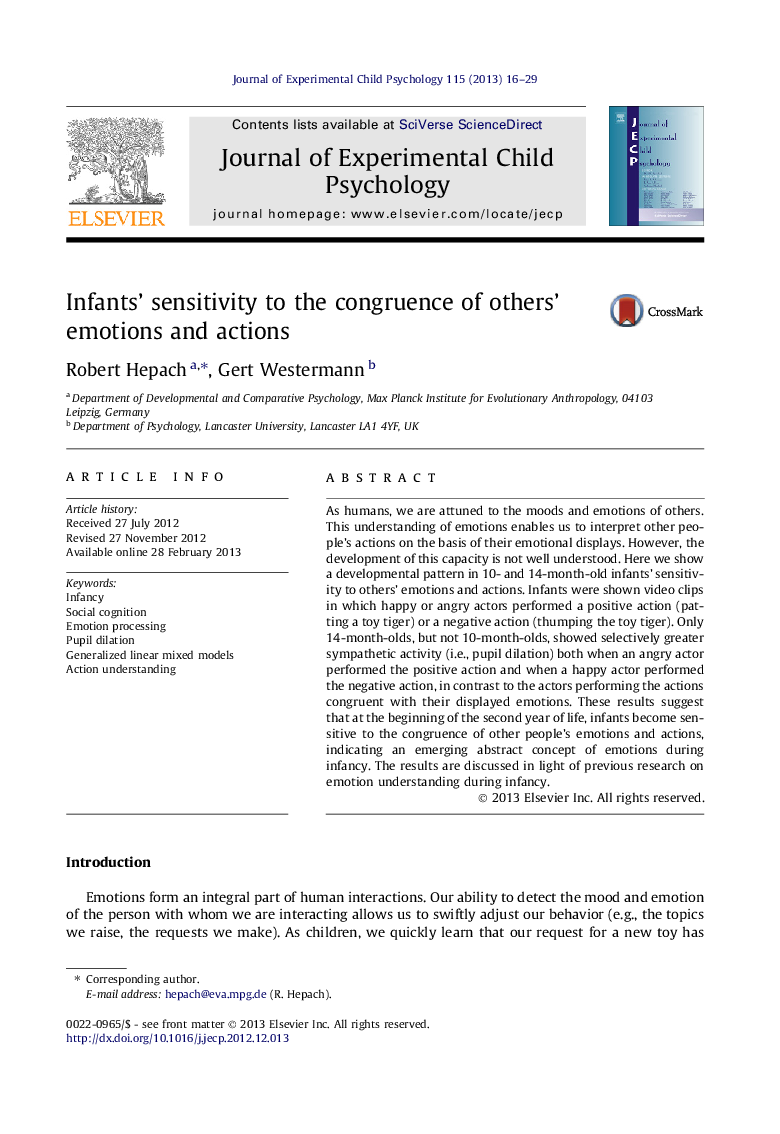| کد مقاله | کد نشریه | سال انتشار | مقاله انگلیسی | نسخه تمام متن |
|---|---|---|---|---|
| 918189 | 919461 | 2013 | 14 صفحه PDF | دانلود رایگان |

As humans, we are attuned to the moods and emotions of others. This understanding of emotions enables us to interpret other people’s actions on the basis of their emotional displays. However, the development of this capacity is not well understood. Here we show a developmental pattern in 10- and 14-month-old infants’ sensitivity to others’ emotions and actions. Infants were shown video clips in which happy or angry actors performed a positive action (patting a toy tiger) or a negative action (thumping the toy tiger). Only 14-month-olds, but not 10-month-olds, showed selectively greater sympathetic activity (i.e., pupil dilation) both when an angry actor performed the positive action and when a happy actor performed the negative action, in contrast to the actors performing the actions congruent with their displayed emotions. These results suggest that at the beginning of the second year of life, infants become sensitive to the congruence of other people’s emotions and actions, indicating an emerging abstract concept of emotions during infancy. The results are discussed in light of previous research on emotion understanding during infancy.
► 14-month-old infants form expectations about others’ actions given their emotions.
► 10-month-old infants show limits in this ability.
► Pupil dilation is shown to be a useful measure of infants’ sympathetic activity in response to unexpected events.
Journal: Journal of Experimental Child Psychology - Volume 115, Issue 1, May 2013, Pages 16–29